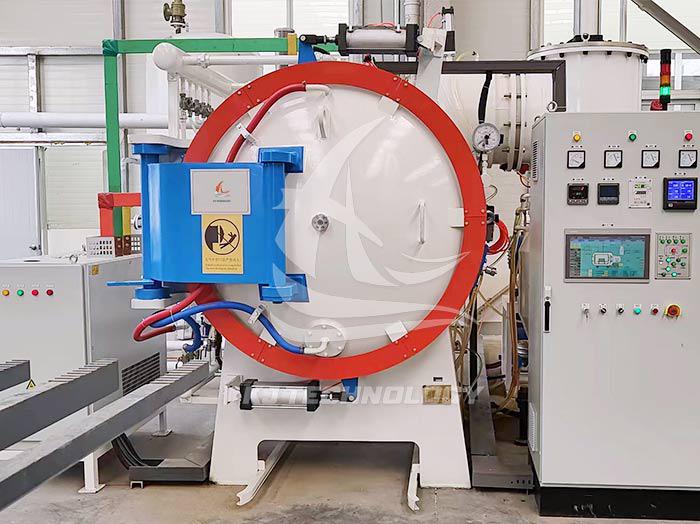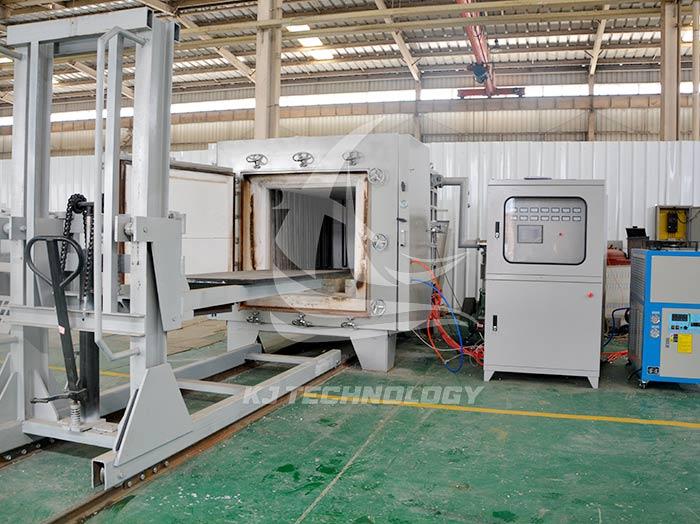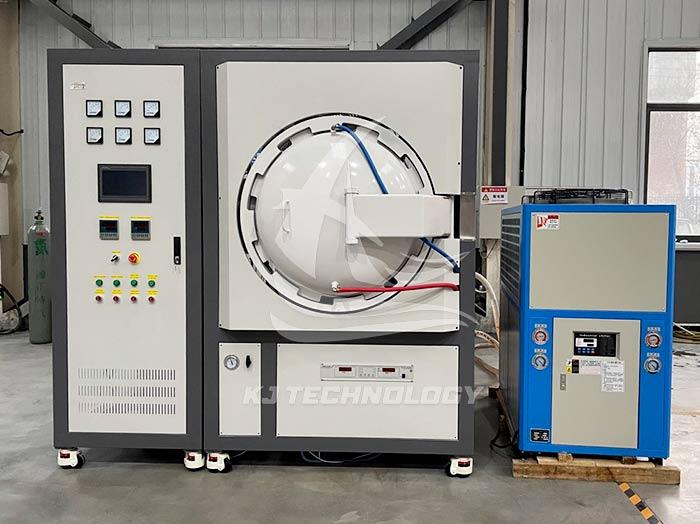High vacuum heat treatment brazing electric furnace brazing metal
 10-15-2025 Author: KJ technology
10-15-2025 Author: KJ technology
The high vacuum heat treatment brazing electric furnace has significant advantages in brazing metals, capable of brazing various metal materials such as aluminum, copper, nickel, stainless steel, composite materials, and high-temperature alloys containing aluminum and titanium. It is particularly suitable for transition liquid phase diffusion welding (TLP) of high-precision components such as aircraft engine single crystal alloy blades. The following is a detailed analysis of its brazing metal:
1. Scope of Brazable Metal Materials
Light metals and alloys
Aluminum and aluminum alloys: widely used in vacuum brazing of aerospace and automotive heat exchangers (such as water tanks and evaporators) to avoid the formation of oxide layers and improve joint corrosion resistance.
Copper and copper alloys: suitable for precise connection of electronic components (such as IGBT modules) and microwave devices, ensuring high conductivity and reliability.
Titanium and titanium alloys: used for aviation engine components, medical implants, vacuum environment to suppress hydrogen embrittlement and improve fatigue life.
High temperature alloys and special materials
Nickel based/cobalt based high-temperature alloys: used for aircraft engine turbine blades and combustion chambers. Vacuum brazing can achieve transition liquid phase diffusion welding (TLP) of single crystal alloy blades, and the joint strength is close to that of the base material.
Ceramic metal composite materials: Reliable connection between ceramics and metals is achieved through active brazing materials such as Ag Cu Ti, expanding the application range of materials.
Combination of heterogeneous materials
Steel aluminum/copper titanium: Vacuum environment eliminates interface oxide layer, promotes wetting and diffusion, achieves high-strength connection of dissimilar materials, and meets the needs of electronic packaging and nuclear energy industry.
2. Advantages of brazing process
Non oxidizing welding environment
The vacuum degree can reach 5.0 × 10 ⁻⁴ Pa or above, effectively eliminating oxygen and preventing metal oxidation at high temperatures, especially suitable for brazing of active metals such as titanium and aluminum.
Prevent joint embrittlement caused by oxide layer, improve corrosion resistance and fatigue life.
Joint quality and performance
Dense and defect free: Vacuum environment reduces porosity, uniform joint structure, and higher tensile strength.
Enhanced corrosion resistance: eliminates the risk of hydrogen embrittlement during welding, suitable for harsh environments such as marine and chemical industries.
Small heat affected zone: precise temperature control (± 1 ℃) limits heat input, reduces grain growth of the base material, and maintains stable performance.
Process flexibility and efficiency
Multi channel brazing synchronization processing: supports one-time welding of complex components (such as automotive heat exchangers) to improve production efficiency.
Wide adaptability of brazing materials: compatible with traditional brazing materials (such as copper based and silver based) and new active brazing materials, meeting the connection needs of heterogeneous materials.
3. Typical application scenarios
Aerospace field
Engine components: turbine blades, honeycomb structure, and vacuum brazing of combustion chambers to ensure reliability under high temperature and pressure.
Lightweight structure: The connection of titanium alloy frame and aluminum lithium alloy components reduces weight while improving strength.
automotive industry
Heat exchange system: Vacuum brazing of aluminum alloy water tanks, condensers, and oil coolers to improve heat dissipation efficiency and durability.
New energy components: connection between battery module electrodes and hydrogen fuel cell stacks, optimizing conductivity and sealing.
Electronics and Power Industry
High power devices: precision brazing of IGBT modules, microwave devices, and vacuum relays to reduce contact resistance and improve reliability.
Semiconductor manufacturing: Non polluting connections during silicon wafer diffusion and oxidation processes to ensure product purity.
Medical and energy fields
Medical devices: Vacuum brazing of surgical instruments and implants (such as joints and dental implants) to ensure biocompatibility.
Nuclear energy components: Sealed connections of nuclear fuel elements and reactor pressure vessels to meet stability requirements in radiation environments.








